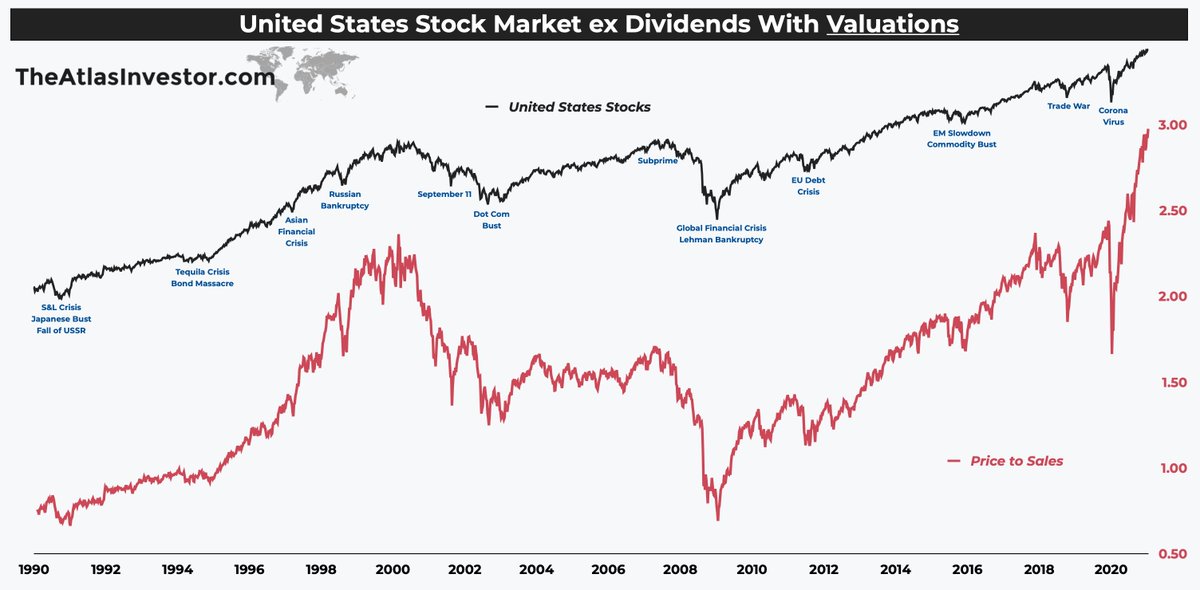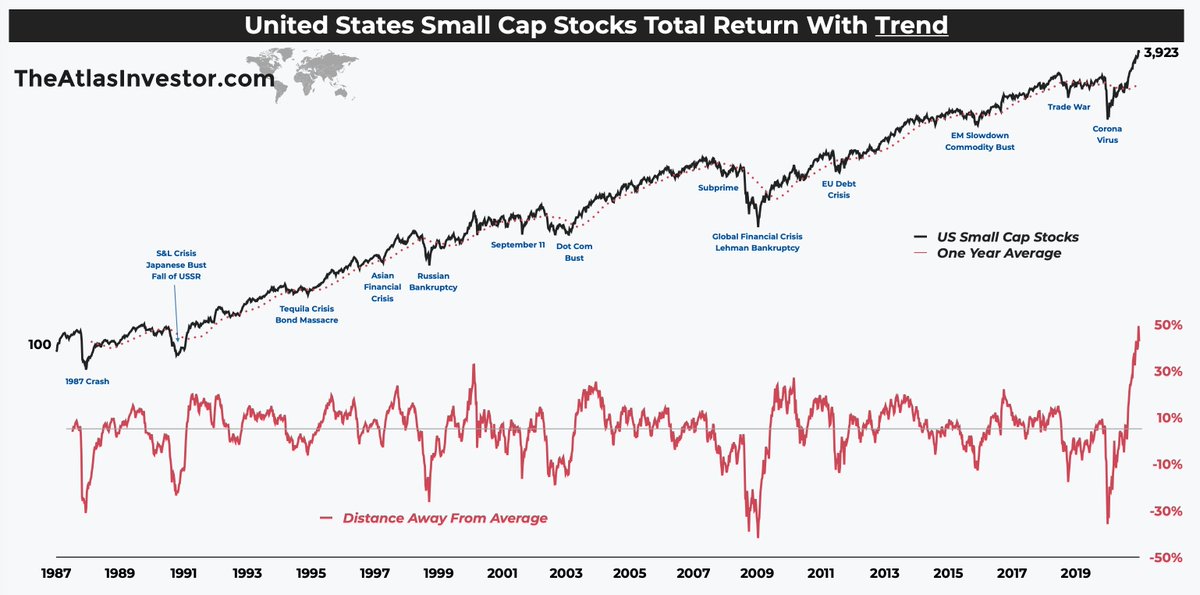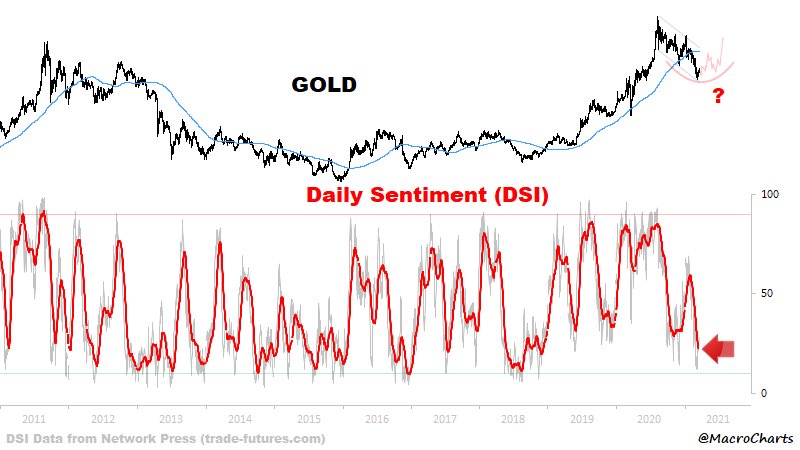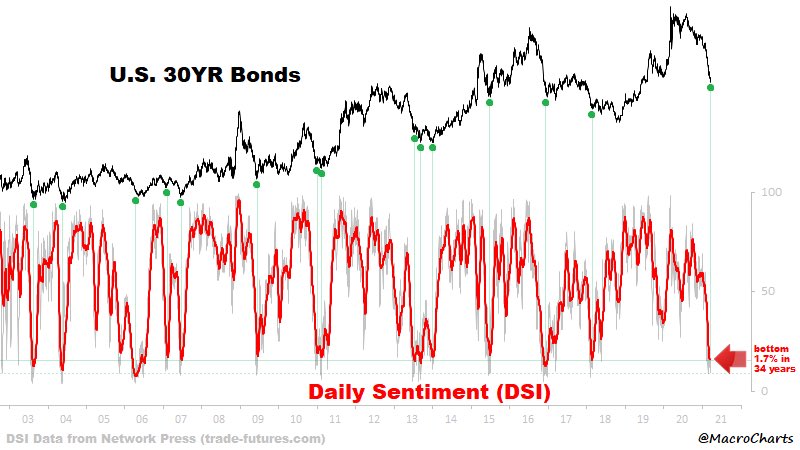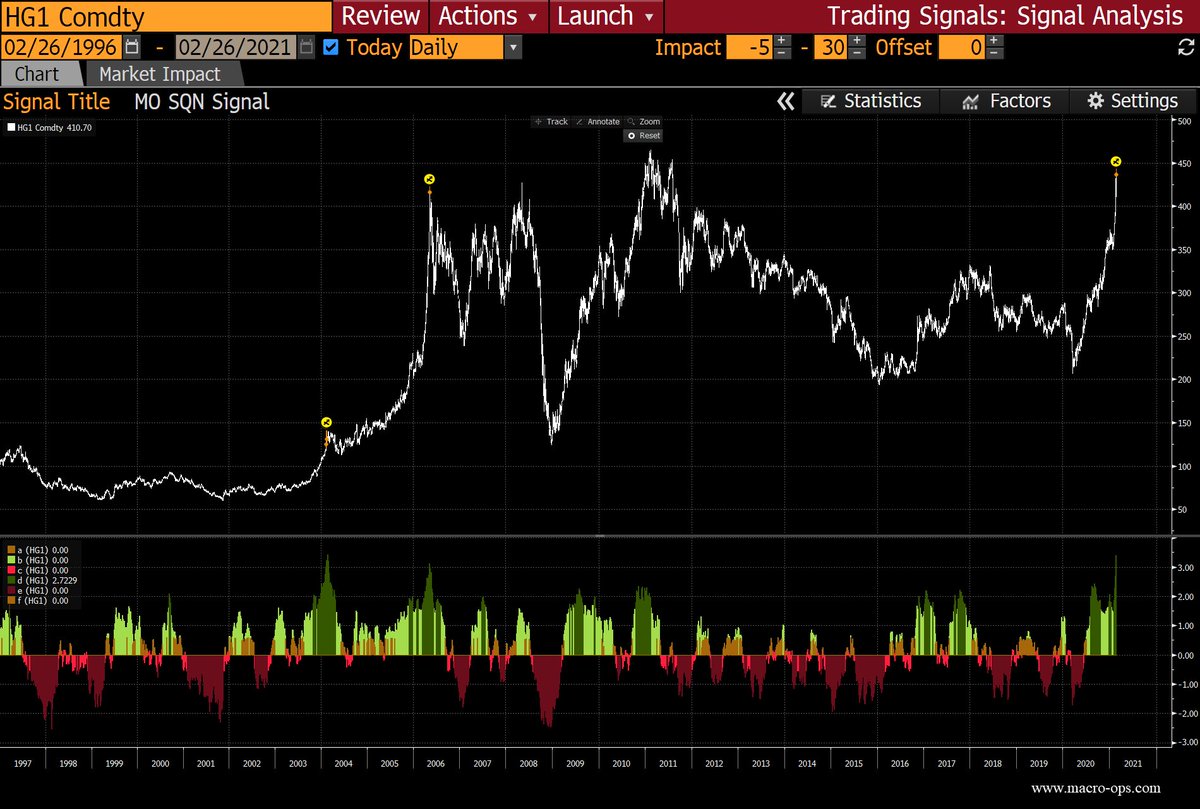
Emerging Markets thread.
The EM stocks have been consolidating for 14 years plagued by one crisis after another.
For their stocks to outperform, we need:
• sustained weaker $USD
• accelerating growth vs DM
• higher commodities (inflation)
• booming global exports (demand)
The EM stocks have been consolidating for 14 years plagued by one crisis after another.
For their stocks to outperform, we need:
• sustained weaker $USD
• accelerating growth vs DM
• higher commodities (inflation)
• booming global exports (demand)

Relative to the US market, Emerging Markets have been underperforming since 2011 — coincides with the bottom in the $USD.
The underperformance is actually worse if we remove the China Tech sector (Tencent, Alibaba, etc).
EM: a value trap or once-in-a-decade buying opportunity?
The underperformance is actually worse if we remove the China Tech sector (Tencent, Alibaba, etc).
EM: a value trap or once-in-a-decade buying opportunity?
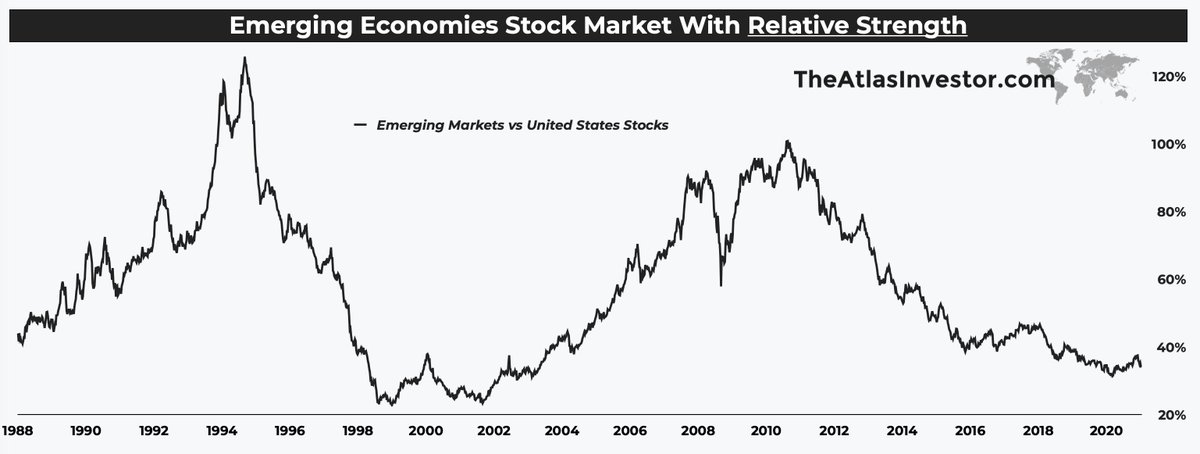
Within the Emerging Economies complex, Asia has been the outperformer while the rest of the countries have lagged considerably.
The chart below shows the EM ex Asia, which recently traded below the March 2009 bottom (11 years ago).
These countries are dirt cheap, in our view.
The chart below shows the EM ex Asia, which recently traded below the March 2009 bottom (11 years ago).
These countries are dirt cheap, in our view.
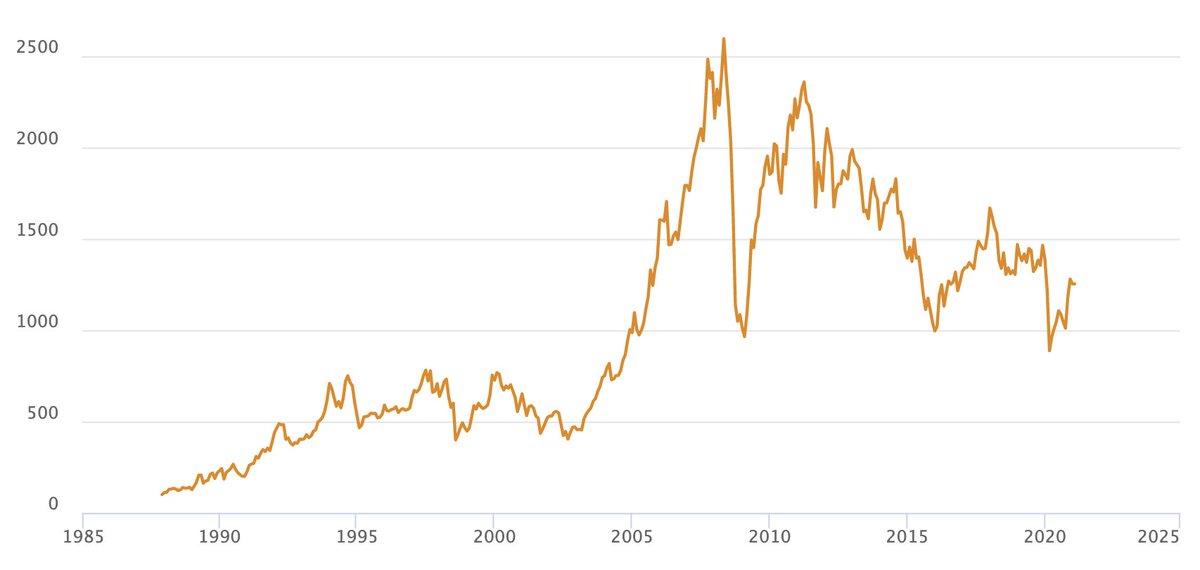
Emerging Market real estate investment destinations like #Bali are feeling the income pain.
Airbnb villas, hotels, serviced apartments & all other hospitality real estate continue to struggle as tourist arrivals collapsed in 2020, with no major improvement this year.
Airbnb villas, hotels, serviced apartments & all other hospitality real estate continue to struggle as tourist arrivals collapsed in 2020, with no major improvement this year.

"The economy in Bali shrank by 9.31 percent year-on-year in 2020, the National Statistics Agency (BPS) announced today, as the coronavirus pandemic brought the tourism-dependent province to a shuddering halt."
coconuts.co/bali/news/bali…
coconuts.co/bali/news/bali…
"By the end of the Q3 of 2020, Bali & the Nusa Tenggara islands were the hardest hit regions in Indonesia... the Indonesian Hotel & Restaurant Association said that at least 60 hotels across the province are being put up for sale due to continued decline in occupancy rates."
Despite EM correcting in recent weeks, we haven't seen an uptick in spreads.
Central banks continue to have a tight grip on fixed income markets, with spreads tightening dramatically despite ongoing economic problems.
EM spreads are the tightest in Eastern Europe right now.
Central banks continue to have a tight grip on fixed income markets, with spreads tightening dramatically despite ongoing economic problems.
EM spreads are the tightest in Eastern Europe right now.

• • •
Missing some Tweet in this thread? You can try to
force a refresh


